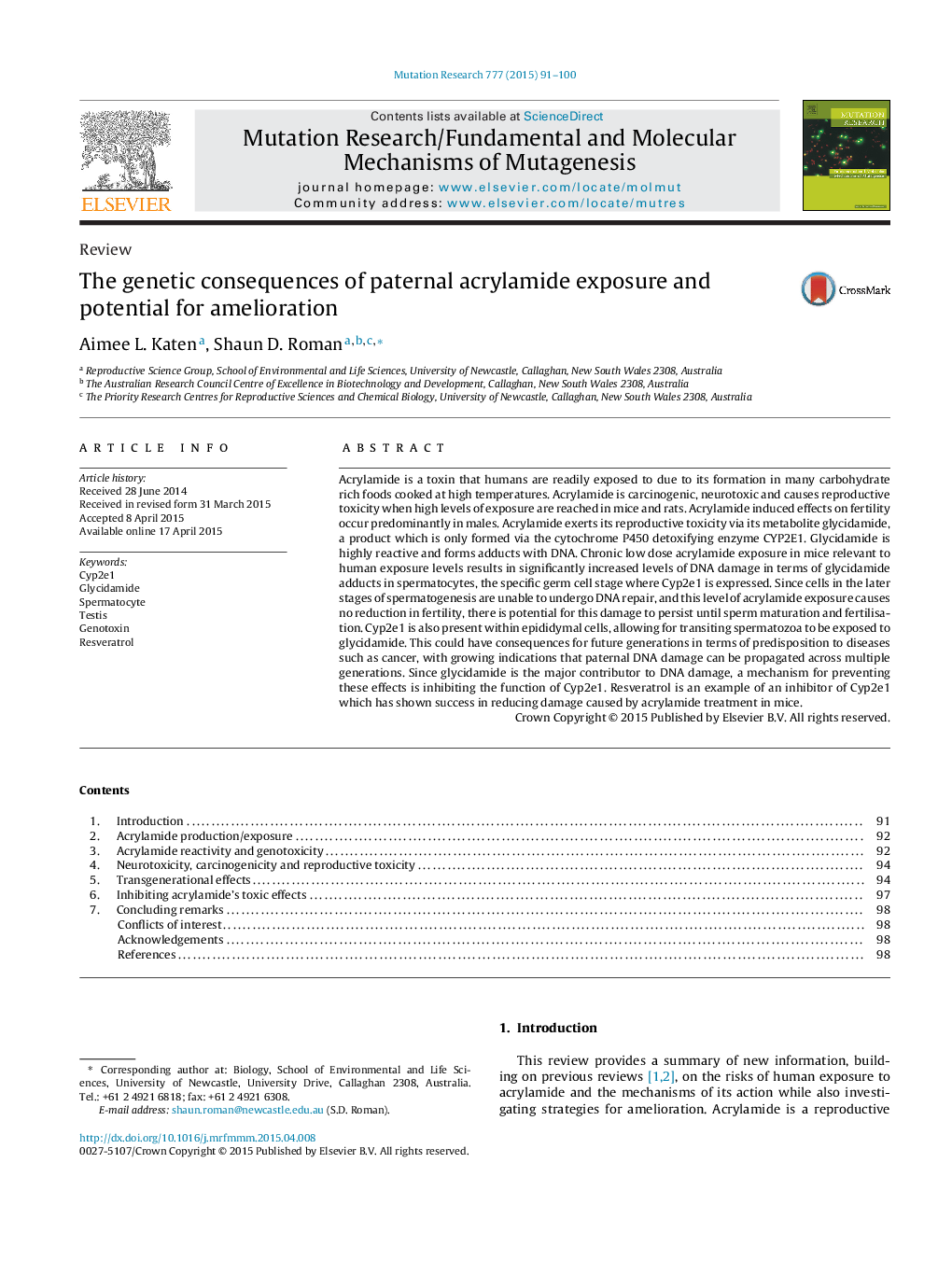| کد مقاله | کد نشریه | سال انتشار | مقاله انگلیسی | نسخه تمام متن |
|---|---|---|---|---|
| 2146240 | 1548322 | 2015 | 10 صفحه PDF | دانلود رایگان |
• Acute high dose acrylamide exposure in male mice results in reproductive toxicity.
• Cyp2e1 null mice do not convert acrylamide to glycidamide and reproductive toxicity is prevented.
• Acrylamide causes damage to DNA in germ cells of male mice exposed to low-dose human exposure.
• This DNA damage has the potential to persist until sperm maturation and fertilisation.
• We assess the potential for inhibitors of Cyp2e1 in preventing these transgenerational effects.
Acrylamide is a toxin that humans are readily exposed to due to its formation in many carbohydrate rich foods cooked at high temperatures. Acrylamide is carcinogenic, neurotoxic and causes reproductive toxicity when high levels of exposure are reached in mice and rats. Acrylamide induced effects on fertility occur predominantly in males. Acrylamide exerts its reproductive toxicity via its metabolite glycidamide, a product which is only formed via the cytochrome P450 detoxifying enzyme CYP2E1. Glycidamide is highly reactive and forms adducts with DNA. Chronic low dose acrylamide exposure in mice relevant to human exposure levels results in significantly increased levels of DNA damage in terms of glycidamide adducts in spermatocytes, the specific germ cell stage where Cyp2e1 is expressed. Since cells in the later stages of spermatogenesis are unable to undergo DNA repair, and this level of acrylamide exposure causes no reduction in fertility, there is potential for this damage to persist until sperm maturation and fertilisation. Cyp2e1 is also present within epididymal cells, allowing for transiting spermatozoa to be exposed to glycidamide. This could have consequences for future generations in terms of predisposition to diseases such as cancer, with growing indications that paternal DNA damage can be propagated across multiple generations. Since glycidamide is the major contributor to DNA damage, a mechanism for preventing these effects is inhibiting the function of Cyp2e1. Resveratrol is an example of an inhibitor of Cyp2e1 which has shown success in reducing damage caused by acrylamide treatment in mice.
Journal: Mutation Research/Fundamental and Molecular Mechanisms of Mutagenesis - Volume 777, July 2015, Pages 91–100
